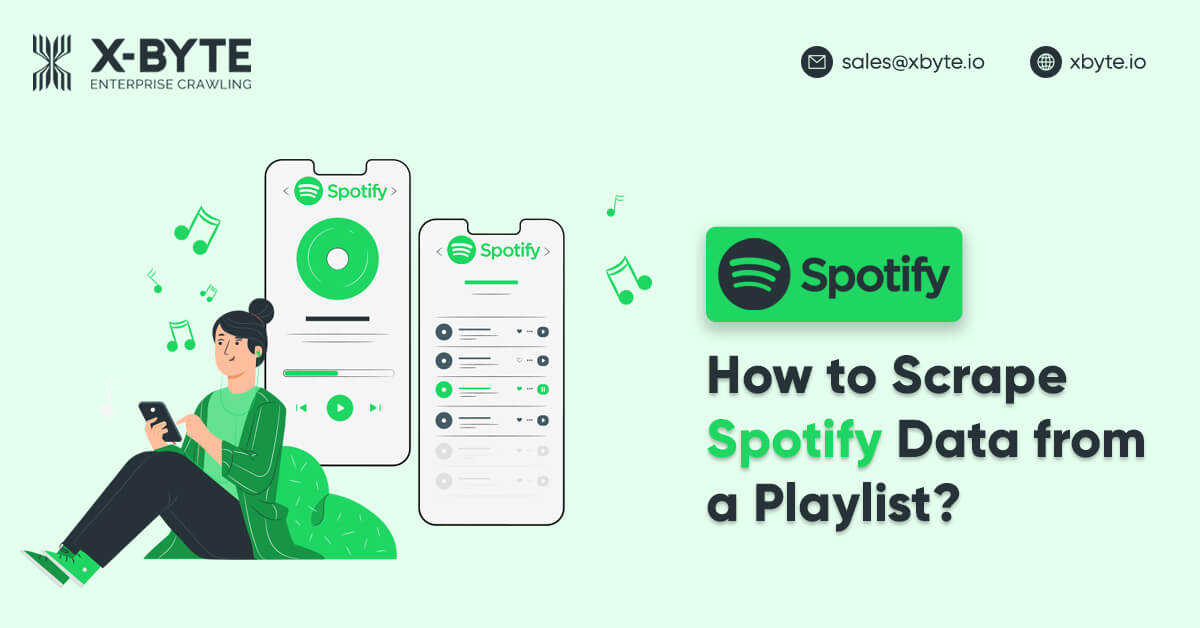
What is Spotify?
Spotify is amongst the most well-known streaming platforms available around the world. They offer an API for the developers to use their massive music database to create interesting applications as well as discover insights into listening habits. Spotify Technology S.A. is the Swedish media service provider that provides music streaming services. It is officially located in Luxembourg with headquarter in Stockholm in Sweden.
Scraping Hotel Lists for a City Originated in 2006, the company’s main business is to offer an audio streaming platform called “Spotify” that offers DRM-restricted videos, music, and podcasts from different record labels as well as media companies. Being a freemium service, all the basic features are completely free with the advertisements and auto music videos, whereas additional features like commercial-free listening and offline listening are provided through paid subscriptions.
When you observe Spotify as merely a music streaming platform, this is an advantage for developers that want to create services over music data. Spotify exposes APIs to the developers as well as one can submit applications created on the top of Spotify for getting it published through them. At X-Byte Enterprise Crawling, we will show you how to scrape data from Spotify with the help of Spotify library, Python.
Things You Should Know About Scraping Spotify
Except for what we generally use for scraping data from different websites, we will need Spotify also as a light weight Python library used in Spotify Web API. Also, you must produce Client Credentials with the help of this link as you will need two values-
client_id
client_secret
Once you do the necessary imports in the code, you have to add a few functions that will need scraping the data. However, you need to first produce an object of a Spotify class with the help of credentials, which you have obtained from a Spotify developer’s page. The first thing is get_track_ids – which will be used to return all track ids for the provided playlist id.
Also, you can utilizea sp.playlist function for getting the ids. However, they would be available in the tree-like format, therefore you would need to choose the JSON to scrape the ids only. The ids added to the array as well as returned.
The next function, which we have provided is get_track_data It takes the id of one track as input and would return some data points associated with that as output (in the JSON format).
The sp.track may easily utilize to fetch different data points associated with the track, which Spotify exposures to the developers, by passing a tracking id. Then, you must scrape the required data points as well as manipulate them as per your requirements.
Spotify
When you have two functions equipped, you can receive a playlist id. You may scrape a playlist id from the URL of the playlist. This is an alphanumeric series, which may look like:
“6SklPNt6XKJRW5ZFMTxxE6”. When you entera playlist id, we scrape the track ids with the help of a function we have written before as well as print these ids and also the ids we scrapped (thatmust be equal to total songs on the playlist).
After that, we loop over a track id list as well as scrape Spotify playlist data points. We use sleep functionality for providing a smaller gap between data extraction points for every track.
It was done with the intention that we don’t do so many hits on Spotify collected, as well as end up getting blocked. These data-points scraped for every song put in the JSON format as well as added to the list, which is saved in the file for use.
Understand the Outputs
The outputs of this DIY code is very easy. You could observe that we have scraped these data points from all songs:
- Name
- Artist
- Album
- Releasing Date
- Duration (Minutes)
From the data points given here, only the duration needs to process as it is available in milliseconds. Therefore, we have converted that into minutes as well as rounded that off to two decimal places for making it more expendable. Our playlist had about 50 songs, therefore we have got the list of 50 JSON blocks although we have revealed only a few here to make you understand. You can easily create your playlists having hundreds of songs as well as scrape their data.
Conclusion
As top websites also are providing developer support, it would be easy for open-source communities to create features and apps on the top of well-known websites. Presently, a lot of sites like Twitter and LinkedIn are also providing API access to the developers after getting certain data from them. Whereas websites, which offer developer access, make the lives easier for us. Others require Spotify data scraping services to find their data. Spotify web scraping services gives you additional flexibility in terms of what information you want as well as how you need it, it becomes twice as hard as compared to having a Spotify API.
